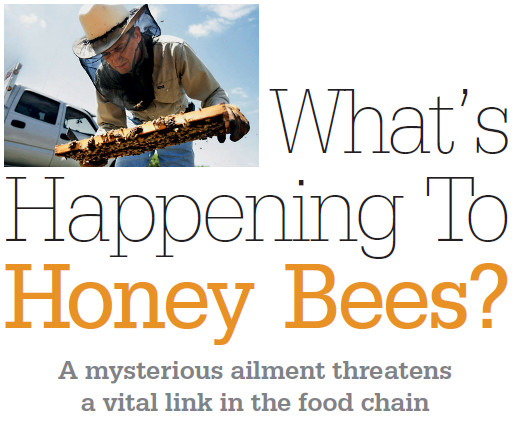466



 DRIVING QUESTIONS
DRIVING QUESTIONS
- What are keystone species in a community, and why are pollinators considered keystone species?
- What are food chains and food webs, and how does energy flow through them?
- What positive and negative interactions occur among members of a community?
 AVE HACKENBERG HAS BEEN KEEPING BEES FOR MORE than 40 years. Every spring, as flowering plants start to bloom, he trucks bees from his home in central Pennsylvania to farms around the country, where they help farmers pollinate local crops–everything from California almonds to Florida melons. In November 2006, as he had done for years, Hackenberg brought his buzzing cargo to his winter base in central Florida. When he dropped them off, his 400 healthy hives were “boiling over” with bees, he says. Three weeks later, when he returned to check on them, the bees had essentially vanished; only 40 healthy hives remained.
AVE HACKENBERG HAS BEEN KEEPING BEES FOR MORE than 40 years. Every spring, as flowering plants start to bloom, he trucks bees from his home in central Pennsylvania to farms around the country, where they help farmers pollinate local crops–everything from California almonds to Florida melons. In November 2006, as he had done for years, Hackenberg brought his buzzing cargo to his winter base in central Florida. When he dropped them off, his 400 healthy hives were “boiling over” with bees, he says. Three weeks later, when he returned to check on them, the bees had essentially vanished; only 40 healthy hives remained.
Mysteriously, there were no dead bees lying in or near the hives. Nor were there any signs of intruders who might have destroyed the hives in search of honey. The bees were simply gone. It was, as Hackenberg said, a bee ghost town.
“I literally got down on my hands and knees and looked between the stones for dead bees,” says Hackenberg, but the beekeeper found none. “I was kind of speechless. And people know I’m not speechless.”
467
468
Hackenberg’s was the first reported case of what has since become known as colony collapse disorder, or CCD. But Hackenberg was not alone. Surveys conducted in 2007 and 2008 by the U.S. Department of Agriculture and the Apiary Inspectors of America found that beekeepers all across the United States had suffered similar unexplained devastation, losing anywhere from 30% to 90% of their colonies.
Since that first case, some 10 million honey bee colonies across the United States have reportedly been wiped out, with American beekeepers losing an average of 30% to 40% of their colonies every year since 2006. To date, CCD has been documented in 35 states and in Canada, as well as in Europe and Asia.
What’s happening to honey bees? No one knows for sure, but it’s a predicament that has beekeepers, farmers, and scientists racing to understand and combat the plight of the precious pollinator. At stake are not only billions of dollars’ worth of agricultural crops but also the health and diversity of natural ecosystems that rely on the valuable services of bees.